Monday, 4 June 2018
“In China there is a saying, ‘If you wake up in the morning and go to sleep in the night having learned nothing, curse the day’. Today, I have learned so much”.
Last week we visited the home of an engineer who now, in his retirement, keeps milking cows on his farm. He described to us with pride how much he enjoys them, even allowing them “exercise time” in the sun every week. He was keen in asking questions and eager to learn of how he was managing his animals well and how else he may improve. We completed our visit with him sharing this quote with us – the words having made a huge impact with me – and then cutting 5 tall pieces of miwa (sugar cane) as a thank you.
Today marks two weeks since arriving here in Naari, Kenya, and I have learned more in 14 days than I ever expected. Under the supervision and guidance of Dr Vanleeuwen, Lee and I have visited almost 30 smallholder dairy farms in this area to learn (and to advise) about issues with cow nutrition, reproduction, and comfort and hygiene. Having limited prior experience with cow health and management, much of this information is completely new to me and I am experiencing many “firsts” here in Kenya!
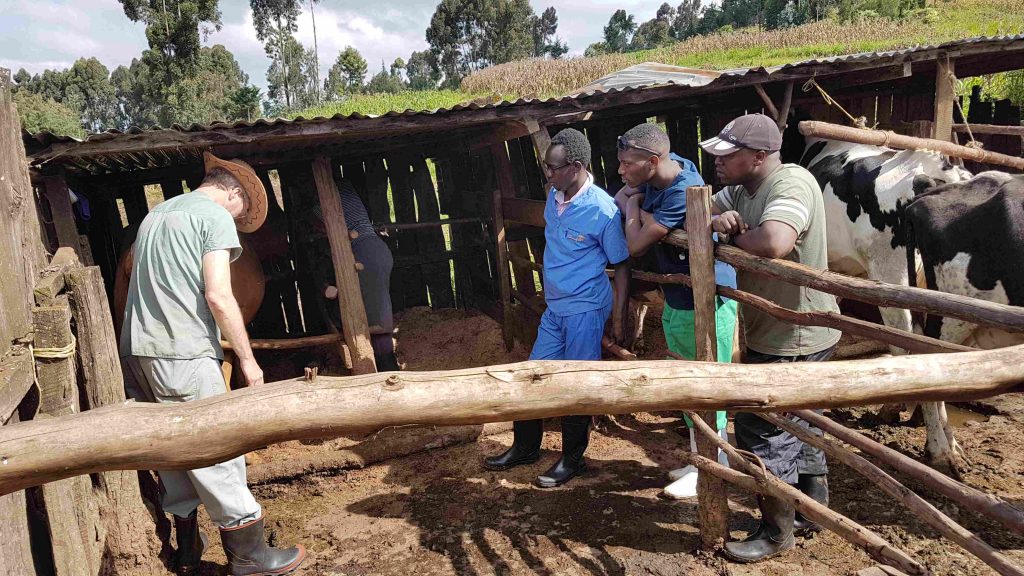
Caption: Dr John Vanleeuwen discussing checkpoints for assessing cow comfort with our Kenyan veterinary friends (left to right) Serem, Remmi, and Benard.
On Day 1 of training, I did my very first rectal palpation – an easy one, on a cow 7 months pregnant. A giant womb and fetus were there to meet my hand, and I learned about detecting “fremitus” (palpable turbulent blood flow in the uterine artery) as the demands of the growing fetus increase. Lee and I practiced scoring body condition, and I learned how to milk a cow so that we could test her milk for mastitis (udder inflammation). I learned next about what it means to “dry off” a cow (to stop her milk production late in gestation), providing her system with a rest prior to calving. This farmer had a cow giving too much milk at dry-off – 17 kg/day which is a good problem to have – and so we advised to go back to the poor feeding management from a few years ago for this cow to reduce her milk production. On the second farm, we were presented with a cow showing no signs of estrus or “heat” (such as vaginal discharge, mounting, and increased restlessness) for more than 3 months after having a calf. On palpation, Lee and Dr V were able to detect a “CL”, or corpus luteum, as evidence that the cow had recently ovulated, despite not showing any obvious heat behaviour. With further investigation into her nutrition, it was diagnosed as a “silent heat” , which I learned can be attributed to a mineral and energy deficit. The fix? Feeding more dairy meal as well as more mineral supplement. On the third farm, Lee and I had a turn at estimating weight, measuring with a weight tape to confirm our guesses, and then calculating a dose of deworming medication. This farmer was preparing silage, so I also had a chance to learn about how this process of fermenting forage material will preserve it and ensure feed is available through the dry months (now until October).

Caption: Lee “preg checking” this cow with a rectal palpation of the uterus.
The next day – believe it or not! – introduced me to more firsts. With much excitement, I was able to palpate an ovary! Granted, it was “cystic” (enlarged), but it’s better to start off easy, right? With a mix of excitement and apprehension, I gave my first intramuscular injection of GnRH, a hormone to stimulate the cystic follicles of this ovary to break and for this cow to return to a normal hormonal cycle. I learned about various causes of abortion, where we discussed freemartinism (when a female calf twins with a male), and advised about feeding adequate colostrum to newborn calves to avoid “failure of passive transfer of immunity” – calves need the maternal antibodies provided in the first milk to give them early protection and the best start at life. The last visit of day 2 provided us with an opportunity to learn and advise about improving cow comfort on a farm. After all, happy cows are healthy cows that make more milk! We learned 12 checkpoints to consider in a stall – from the condition of the roof to the condition of the floor – and how to recommend changes that will encourage cows to stand and lay appropriately in their stalls for better comfort and hygiene.
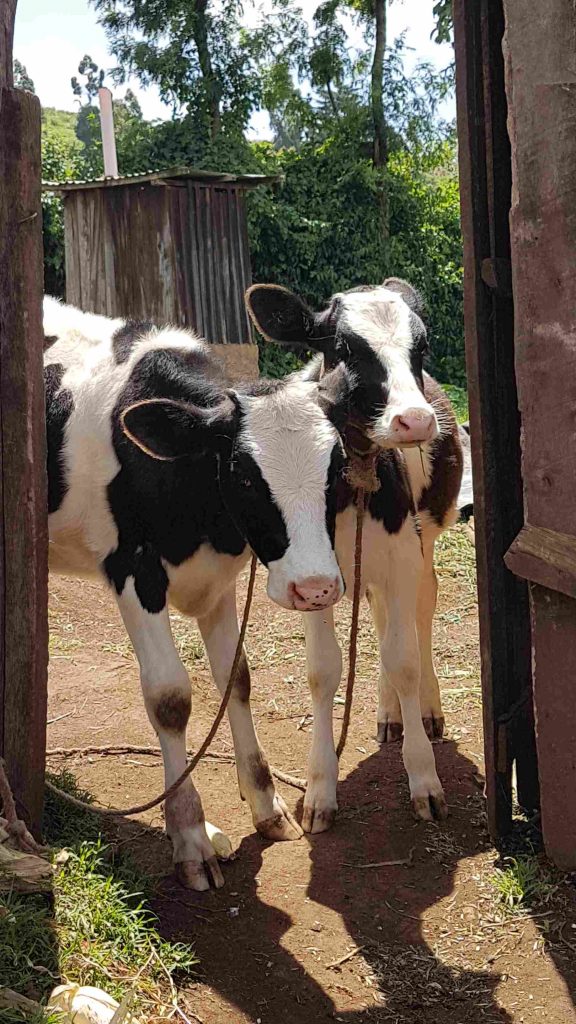
Caption: “Kids” of all species like to watch when there are strangers on the farm!
Our first Saturday evening in Naari brought us our first “patient” – a 2-week-old lamb we found in the yard, away from the flock. Thin, hypothermic, and weak, he was carried inside the house to warm up. Taking full advantage of a teaching moment, Dr V directed Lee and I through a quick physical exam – collecting temperature and heart rate etc. – to assess how critical the situation was. I had little success encouraging him to drink and we did not have any dextrose solution to administer or a stomach tube to force feed, so he received a couple shots of medicine and we left him wrapped in a towel to rest while we figured our options for dextrose and stomach tubes. Our next challenge presented soon after: seizures. Teaching us about different causes of seizures, Dr V administered vitamins in hopes it would help with any deficiencies and I sat under my kikoi (wrap) monitoring the little guy. We concocted a home-made concentrated sugar solution (in place of the dextrose solution), thinking the little guy may have been at such a deficit to have fallen into insulin shock. To everyone’s delight, the seizures stopped. We tried to rig up a stomach tube from a cleaning bottle pump hose. When the lamb began to vocalize some time after that, we became more optimistic, only to realize his vitals had become weaker. Our little “Mukimo” (named after one of our favorite Kenyan dishes) didn’t make it through the night. On Sunday morning, I did the necropsy with a visiting student from Vets Without Borders. The post-mortem exam is crucial in answering questions about “what was wrong?”, and provided us with all the evidence we needed to diagnose starvation. While I struggled for a while thinking of what we could have done differently, I was comforted in knowing we had been able to learn a lot about neonatal critical care, and that he had been warm and shown the best love we could offer prior to his death.
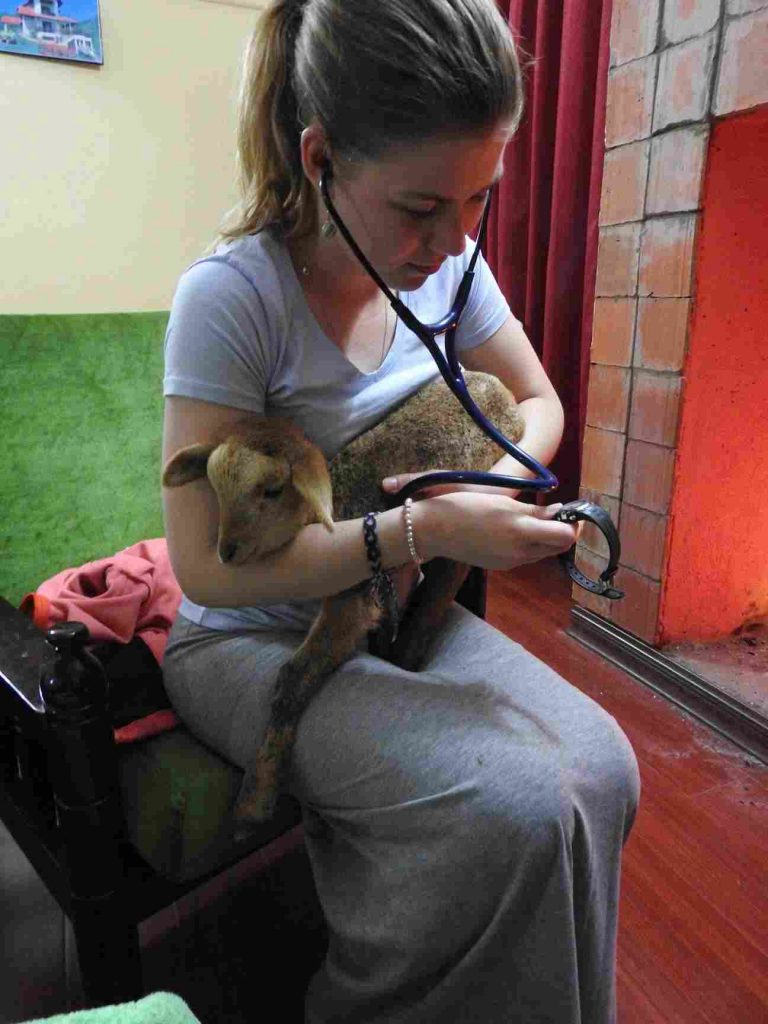
Caption: Practicing my stethoscope skills, monitoring heart rate on “Mukimo”.
With the days that have followed, we’ve continued to learn more and more. We’re becoming more confident in assessing the cows and their environment, along with what questions to ask and what suggestions to make. We attended a seminar at Naari Dairy and – taking a day off from the cows – I learned about all of the work that goes into cooking githeri (a stew of beans, maize, and veggies) for 500 people! (Shout out to our nutrition team!) I’m learning a new word or two in Swahili each day – today, for example, mayai means egg and ndizi means banana. I’ve tried new foods and took a turn at preparing sukuma (kale). We visited Mother Maria Zanelli Children’s Home to help serve breakfast and I had my heart stolen by little Lester – the breakfast “winner”!
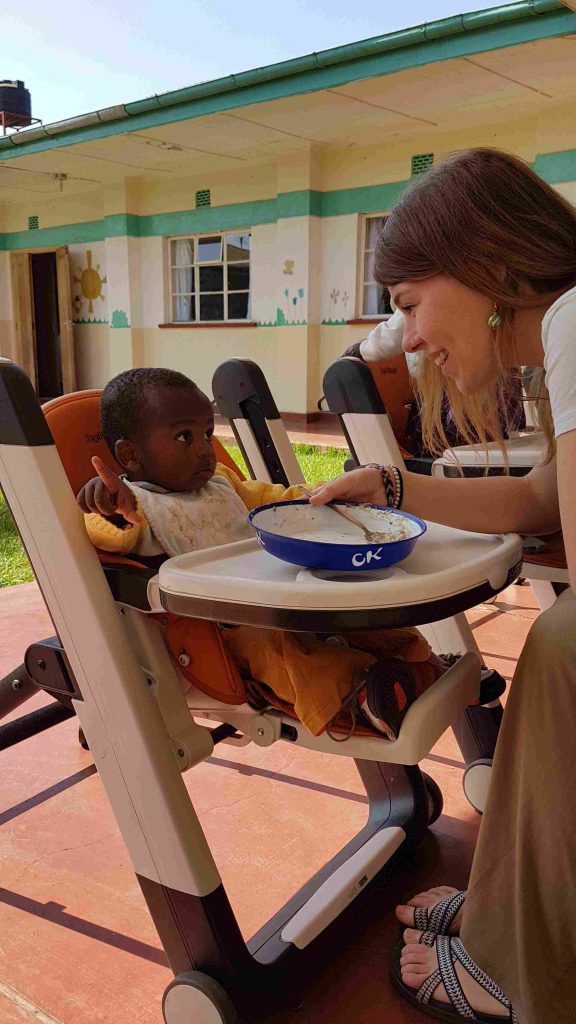
Caption: Breakfast winner! Lester and I were the first to finish not one – but two – platefuls
Finally, I had the most wonderful and emotionally overwhelming couple of days with our crew at Sweetwaters resort in the Ol Pejeta Conservancy – 90,000 acres of wildlife conservation area. My lifelong love of “The Lion King” and obsession with Africa took over and I squealed inside watching rhinos and their calves, elephants, giraffes, buffalo, zebras, and lions! Watching the sky brighten behind Mount Kenya at 6am, with waterbucks grazing just in front of our tent, it hit me again that I am in Africa. This summer I am living on the continent that, as a 10 year old, I dreamed of visiting! I am growing my veterinary education, connecting with new friends – Kenyan and Canadian – and immersing into life on this side of the world. I couldn’t be happier.
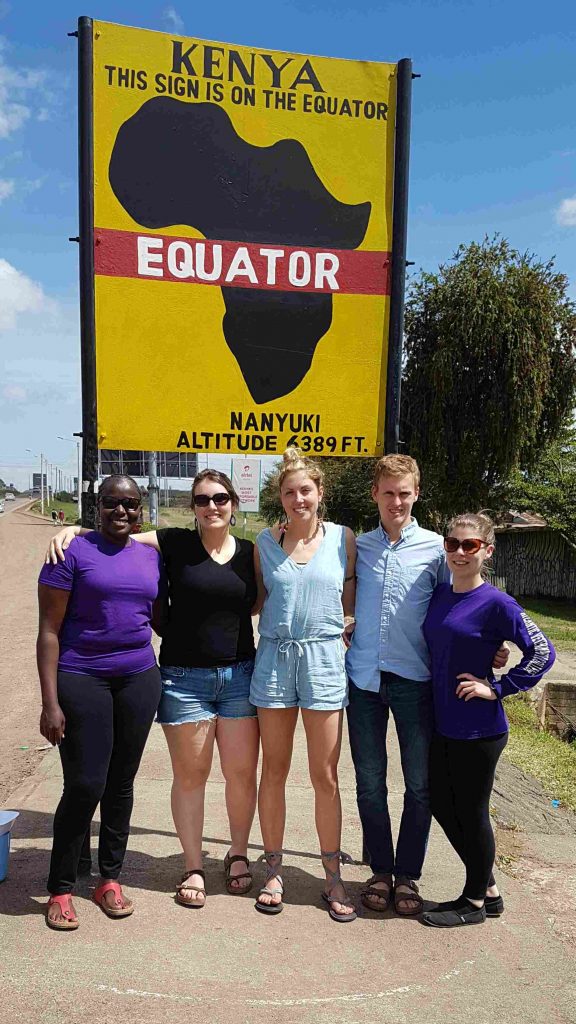
Caption: Our team on the equator – crossing back over to the Northern Hemisphere after our weekend safari. (left to right: Sarah, Hannah, Madi, Lee, and Ashley).
Sending love and hugs to Canada!
Ashley
Week 3 with the Vet Team in Kenya.
By Lee Wesselius
Hello everyone. We had quite the eventful last week. It’s my turn to provide the summary. The week started with a relaxing weekend visiting the Ol Pejeta conservation park where we had the opportunity to see many different types of animals. We stayed in tented rooms that were within 50 meters of the area where the animals could freely roam which led to us having an amazing view of a rhino nursing its young in front of us one evening. We went on a safari drive and saw many different animals such as lions, elephants and giraffes all in their natural habitats. Unfortunately, we just missed out on seeing a cheetah.

(A baby rhino nursing)
After doing some of our herd health management advice visits on farms on Monday, we travelled to the nearby Buuri dairy on Tuesday and met with a few members of the board. The vet and nutrition teams will be working more with the Buuri group in the future, along with a program evaluation team. As part of our trip to Buuri, we collected blood samples from the coccygeal vein (tail vein) or the jugular vein from a representative group of cattle in different zones. The blood samples will then be analyzed in Nairobi for presence of Bovine Viral Diarrhea virus (BVDV) and antibody, a common virus in Canada that can lead to abortions, pneumonia, diarrhea and other problems. This was a great experience for Ashley and me, as I have only done a few blood collections on cows, and it was the first time for Ashley.
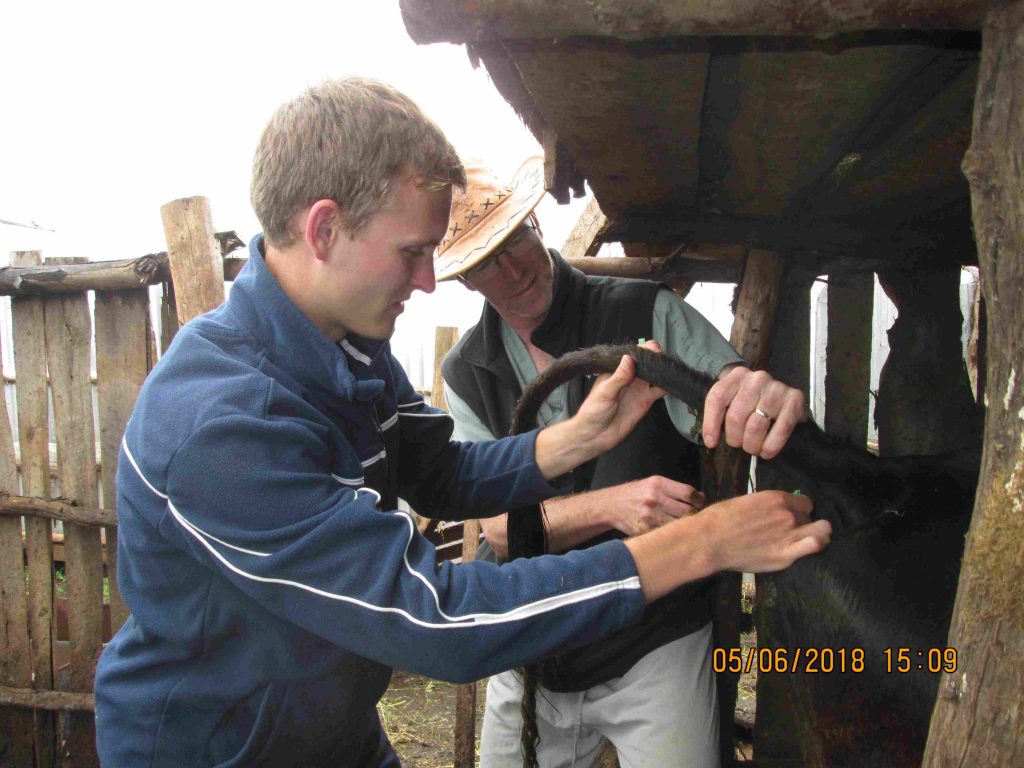
(Myself and John collecting a blood sample)
On Wednesday, we travelled to several farms in the Naari region to administer a vaccine for BVDV, Bovine Respiratory Syncitial virus (BRSV), Parainfluenza-3 (PI3) and Infectious Bovine Rhinotracheitis (IBR). This injection is given subcutaneously (under the skin), by tenting the skin and inserting the needle in the raised area. In the afternoon, we had a meeting with some board members of the Naari dairy as Dr. John was leaving the next day.
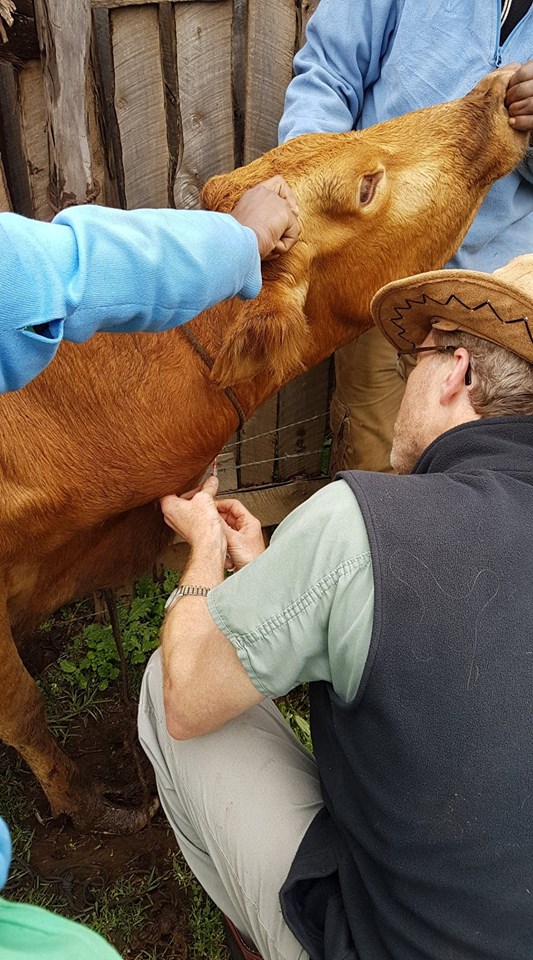
(Dr.John taking a blood sample)
The next day, we said our goodbyes to Dr.John as he was leaving to begin his travels home, which left Ashley, Dr.Remmy and I to fend for ourselves. On our very first farm, we encountered a cow with milk fever. Milk fever occurs right after parturition when the need for calcium increases and the cow is unable to match this increase. This leads to the cow lying flat out and unable to stand. Right before we arrived, a vet tech had already treated the animal by giving the animal an IV injection of calcium and a subcutaneous calcium injection to increase the calcium levels. The IV injection will lead to a quick increase in blood calcium levels, while the subcutaneous injection will be slowly absorbed. Since there wasn’t much we could do at that time, we carried on with our herd health management advice visits on farms that did not have a personal farm visit through our project yet. We came back to the milk fever farm in the afternoon to check on the cow and get it up so that she wouldn’t get muscle damage from lying down too long.

(Dr. John waving goodbye)
On Friday, Ashley and I had the opportunity to accompany the Naari dairy vet tech Benard on several clinical cases. We saw a case of East Coast Fever and a case of Anaplasmosis. Two diseases transmitted by ticks that are commonly seen in Kenya but not in Canada. Benard also bred a few cows by AI and dehorned a cow using a dehorning wire. This was the first opportunity for Ashley and I to witness dehorning using this method. We also visited a farm that had over 50 cows and was milking around 30 of them. The farm used milking equipment for milking the cows (not by hand like most places here), and had tractors for the field work. For Kenyan standards, this was a large farm as most farms we visit only contain a handful of cows.
All in all, we had quite an eventful and enjoyable week. Stay tuned for next week’s blog from the vet team…
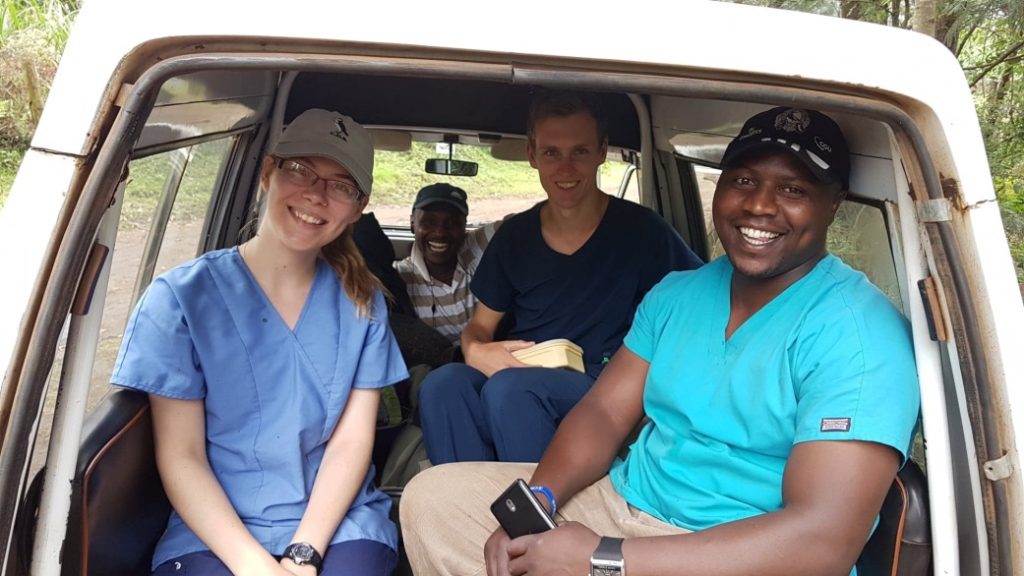
(Ashley, our driver Ndereba, myself and Benard off on some calls)
Wednesday, 20 June 2018
Reflecting on a month in Naari, Kenya
Monday, June 18 marked four weeks since arriving in Naari, and a whole month of being in Kenya. Dr Vanleeuwen has returned to Canada and as of today Lee and I have visited 45 smallholder dairy farms. Thinking about already being a third of the way through
this internship has me thinking about things we are witnessing, about what’s been difficult so far in living here, about what’s been so easy, and about the mark this country is leaving on me.
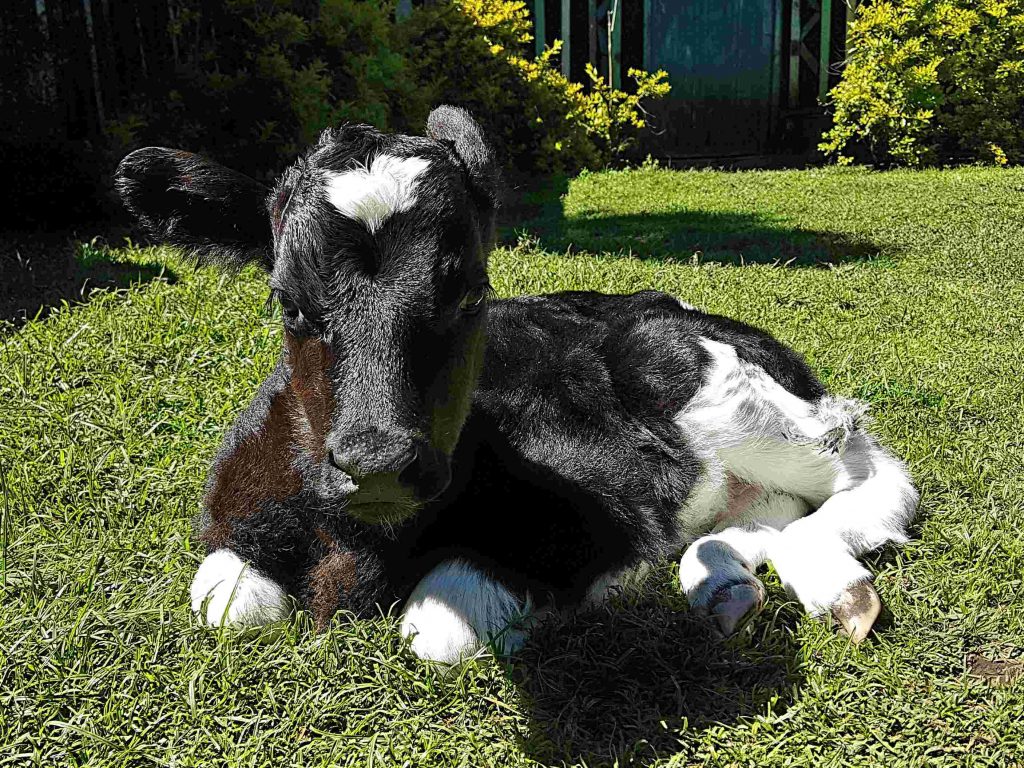
Caption: Congratulations, it’s a girl! This heifer was born the evening before the day of our visit. Female calves are celebrated because they will grow to be milk-producing dairy cows!
Here in Naari, wakulima (farmers) – especially those with only one or two ng’ombe (cows) – depend on their cows’ health and productivity in order to sustain themselves, their families, and their homes. Producing more of high quality maziwa (milk) means making a better food and earning a greater pay, and more income means enough funds to buy more food, send children to school, and afford medicines. When the farms do well, the homesteads grow. Class attendance grows. The entire community grows.
By partnering with Naari Dairy to do research, these projects from UPEI and Farmers Helping Farmers are helping to set a knowledge foundation that farmers need to reach these goals of healthier animals and greater yields. The chairman shared an analogy last week while he shared his gratitude for the contributions of these projects and the training sessions:
“When a child is learning to walk, if she has the will and you catch her hands, she will do it.”
So, we are “catching hands” – taking science and information readily available to us and making it accessible to the farmers. Relaying the information is only part of the whole job, though. The hardest part is left to the farmers themselves: walking. They must be willing to use the new information and skills, make changes, and sustain them. The 45 farms we’ve visited have included those which have received cow nutrition training, or reproduction management information, or both. Some have been instructed on stall design and cow comfort, and others still served as “research controls” which received no educational visits from the teams over the past three years. In each of these groups, Lee and I have witnessed good examples of management and husbandry as well as poor ones. What I’ve come to realize is that the background of the farmer – for example, her education level, her family history of farming practice – together with her willingness to work and change in order to improve, has the most influence over the condition of her animals, the success of her farm, and the success of our visits.
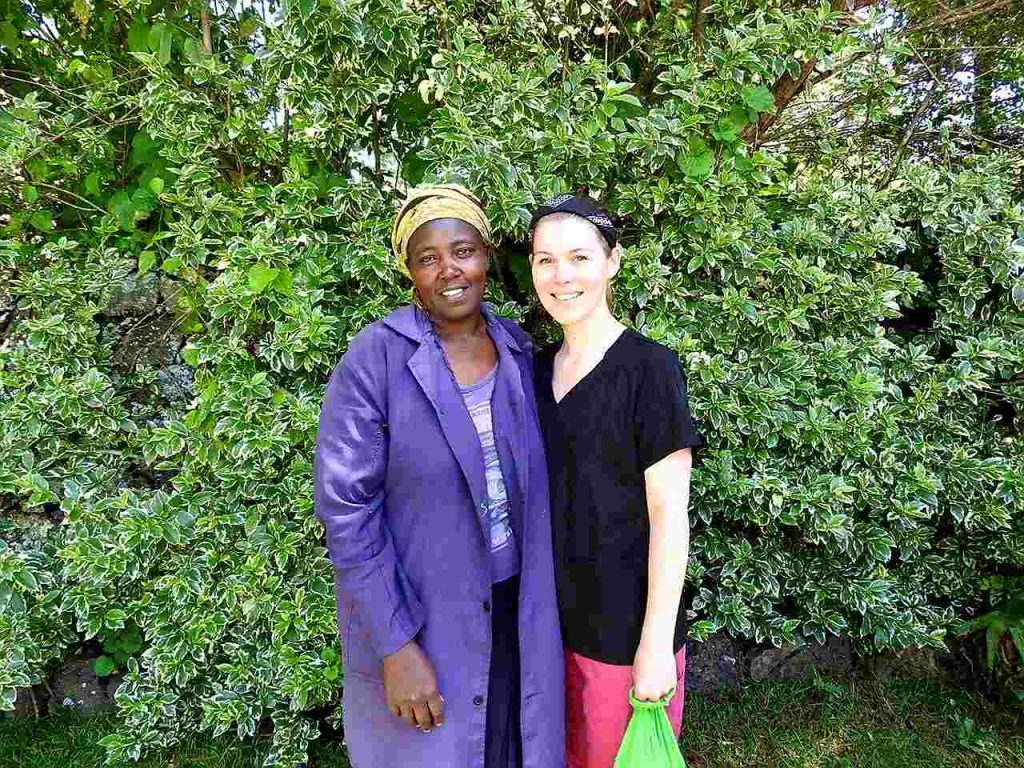
Caption: “My name is Gatwiri. It means feeding the animals, and that is what I do.”
“Farmer Highlight”: Jane Gatwiri
Last week, we met Jane. Her farm was included in our “never visited” group and stands out to me for a few reasons. First, it was the first farm Hannah and Madi had chance to visit with us. To everyone’s delight, they did a great job with collecting milk samples for our CMT! Second, Jane had studied agriculture so was already full of her own knowledge on rearing animals. Visits like this are my favorite – Lee and I have more opportunity to interact and to speak in English, and the farmer engages us with many questions and obvious interest in what we are teaching. Her farming practices required some minor adjustments, but she was easily able to understand where changes were needed and exactly how they would help her cows feel and be “better”. Finally, it was on her cow that I felt my first “real” ovary! (I’m ignoring the cystic ovary I palpated first with Dr V – being so large, that one feels like it is cheating a little!) and everyone, Jane included, shared in my mini-celebration.
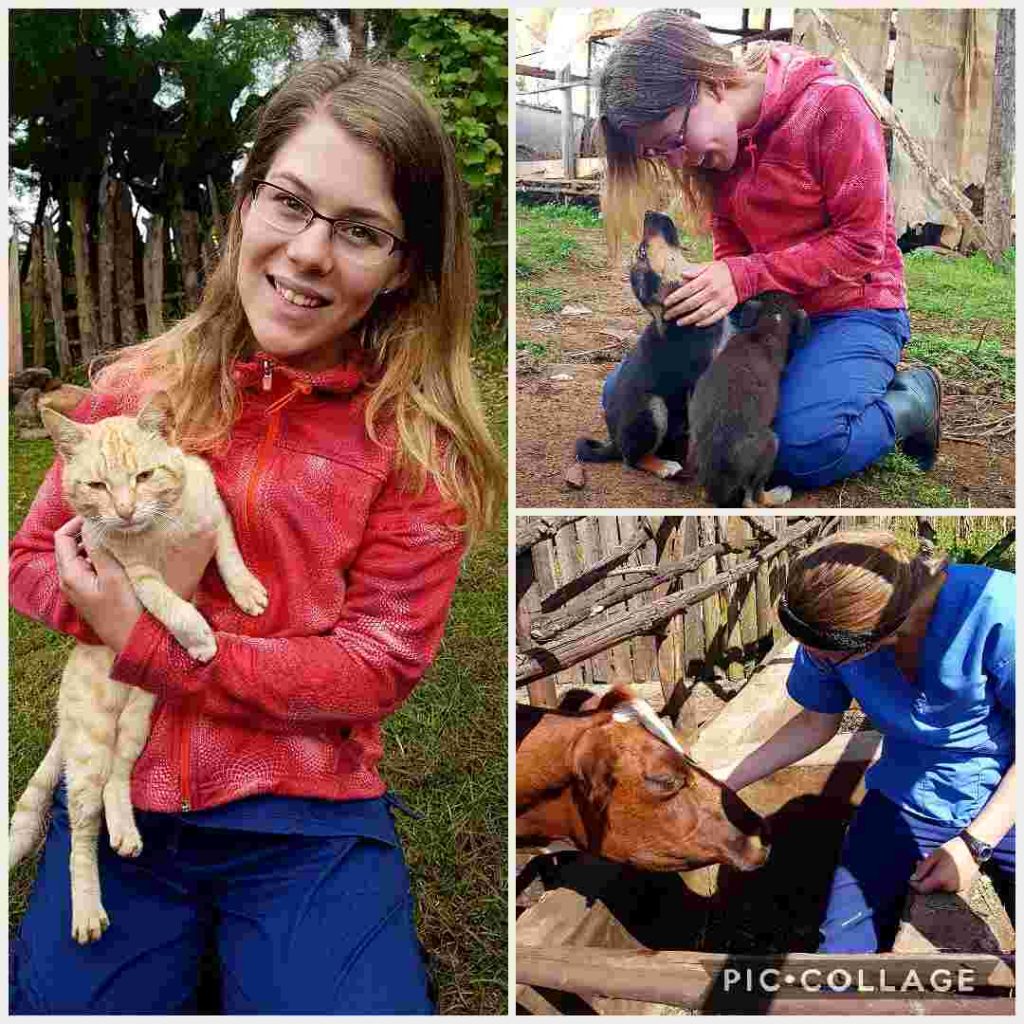
Caption: My secret of what I really do on farms all day. Photo evidence of how I’m obviously trying hard to avoid fleas…
Now, let’s change the pace a little. After all, we aren’t only working! “What about living ‘Kenyan life’?”, you ask?
Well, I told you last time that my adjustment felt instant and effortless, but I’d be lying to you all by saying there haven’t been some small challenges. For starters, I’m still less than thrilled about the cold, and though I’m less vocal with the complaint these days, my “poor, cold Canadian” label has stuck. Sarah has even let me borrow a warm wool hat. Who knew I’d be needing that in June? New foods and a new environment have brought with them new tests for my immune system – with a 24-hour battle with stomach upset and one head cold now on the mend (dancing with kids at the fair was asking for it…), here’s hoping I’m toughened up for the rest of the summer. Lastly, the language barrier creates for me a very personal challenge every day. Not being able to lead with questions and discussion on farms where no English is spoken leaves me restless, and I’m frustrated when I’m limited to greeting and playing with small kids, or the slow process of saying things in English, having it translated to Kimeru, have the farmer respond in Kimeru, and then have that translated back into English. They said my patience would improve while in Kenya – they were right, by necessity.
So how am I coping? I sit by the fire, tuck my toes into Jennifer’s hot pepper slippers, and drink hot dawa (“medicine”, a tea of ginger, lemon, garlic, and honey) from the biggest mug I can find. On farms, I distract myself from dialogue I cannot understand by looking around the farm, taking photos of flowers, and finding baby animals to play with. As for the kids, I do my best with smiles, waves, and “mambo!” (like, “what’s up?”).
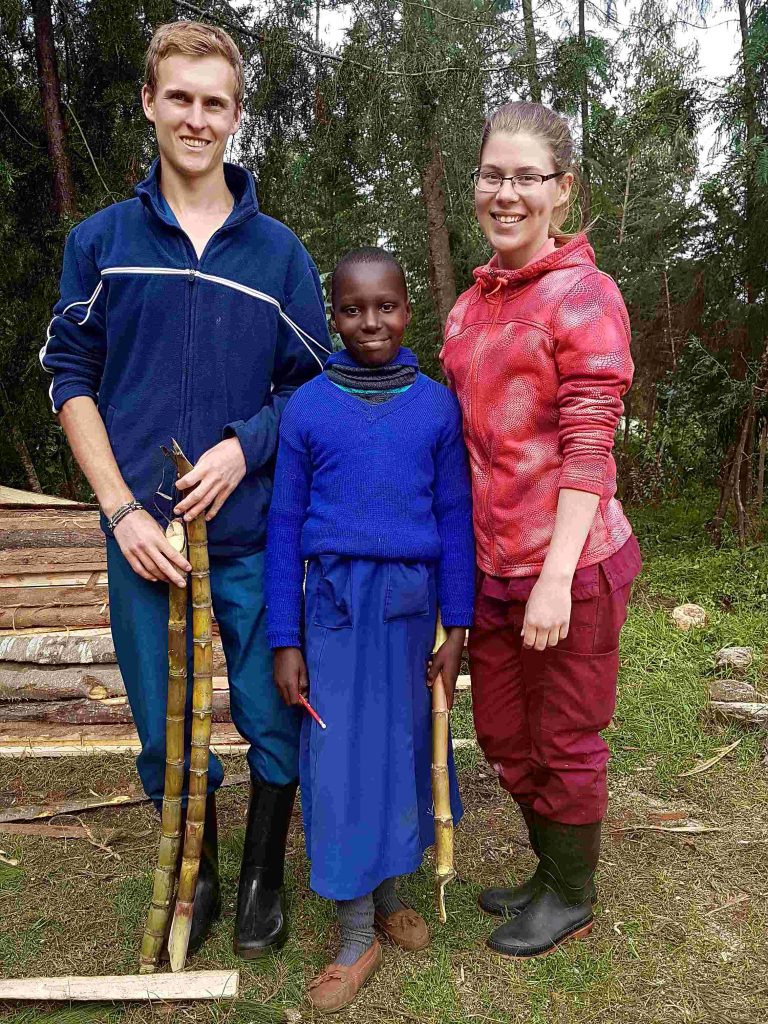
Caption: “Mama Patience” gifted us with miwa and asked to take a photo of us and her eldest child, Patience, our new “little sister”.
Thankfully, I have more that’s been easy than what’s been a little hard. The selection committees for our internships couldn’t have known what a great job they were doing in choosing this year’s teams, but – no exaggeration – we are all getting along so well! Life at home is incredibly comfortable. Six of us spend each evening congregated in the living room chatting over chakula (a meal), sharing stories from the day, and huddling together watching a bit of Harry Potter from Hannah’s computer screen before bed. In Naari, I am growing my Kenyan family by the day. The chairman honored me last week by telling visitors at a meeting, “Look at my daughter here. She will return to Canada, do well and graduate, then we hope she will return to Naari and we will build a house for her”. Ladies at the dairy greet me every morning with hugs and every evening with “Ashley, tell us good news and what you’ve learned today!” I’ve “christened” a cow with her name and an ear tag, I’ve gained a little Kenyan sister, and Remmie and our driver, Ndereba, say that with every new word I learn, I am becoming more of a “Meru-ian”.
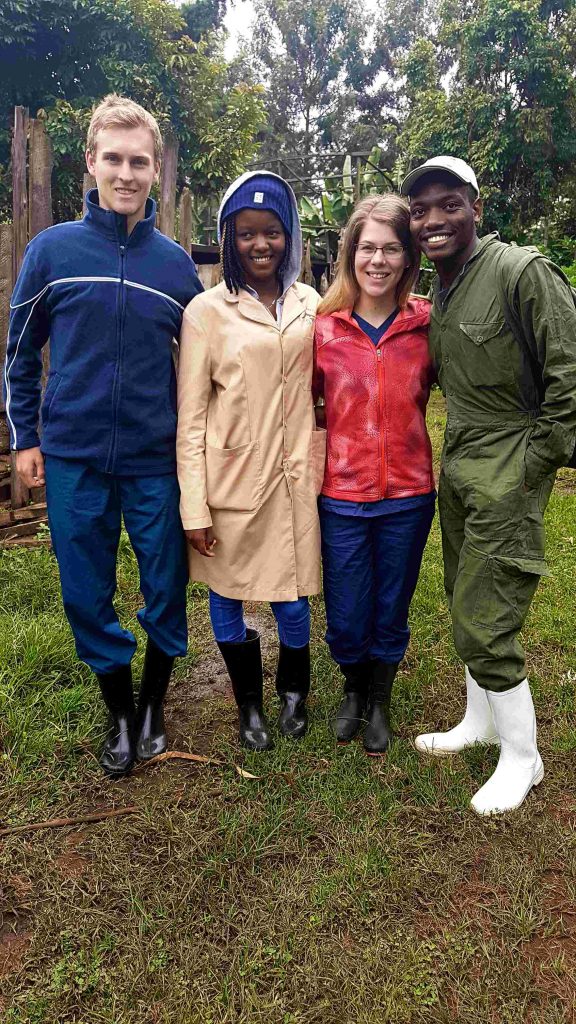
Caption: Case day with the dairy vet techs, Ben & Magda! (Left to right: Lee, Magdalene, Ashley, Remmie. Benard missed the photo!)
Sending love and hugs to Canada!
Ashley
Hello everyone, Lee Wesselius here
A couple weeks ago, the vet team decided to switch things up and join the nutrition team in the field at the Nkando school which is located a fair ways away from where we are located in Naari. We all piled into the back of the Gypsy and headed to the much dryer Nkando area. We watched (and helped a bit) the nutrition team do their school assessment and checked out the greenhouse at the school which was very well maintained. This greenhouse is very important for the school since they were basically only feeding maize in their githeri due to how dry the area is, but now they are feeding a much more balanced githeri with beans, greens and orange vegetables included. While at the school, we also got to play various games with all the students. We also learned that snakes live in the area, but thankfully we avoided any encounters as Hannah and I are terrified of snakes.
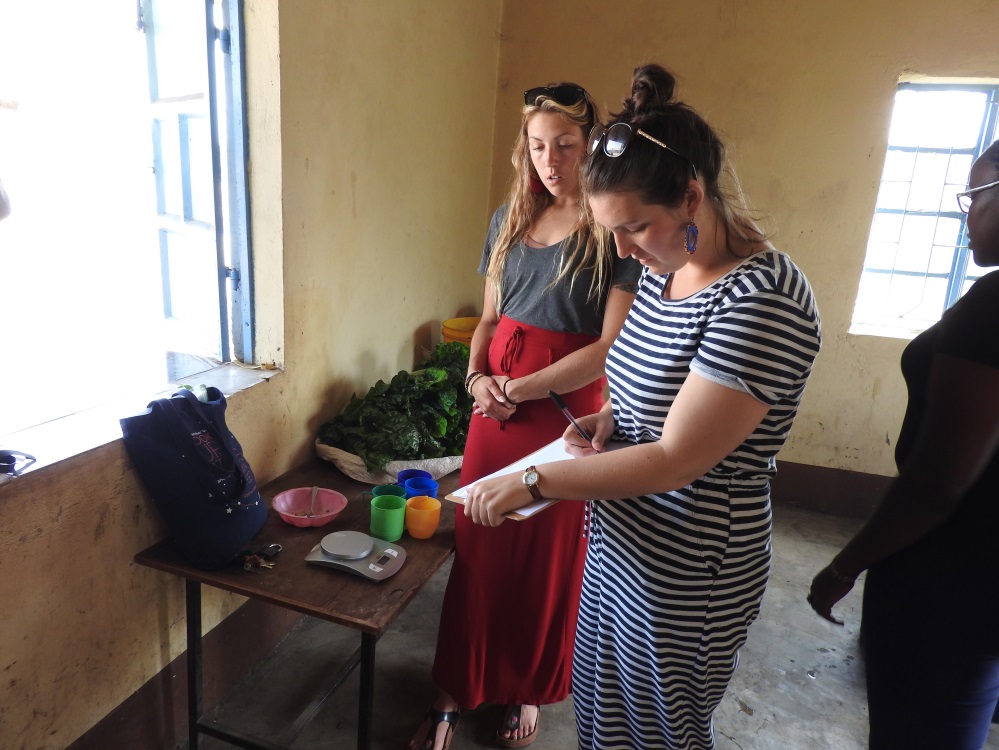
Photo1: (The nutrition team hard at work – Madi, Hannah and Sarah)
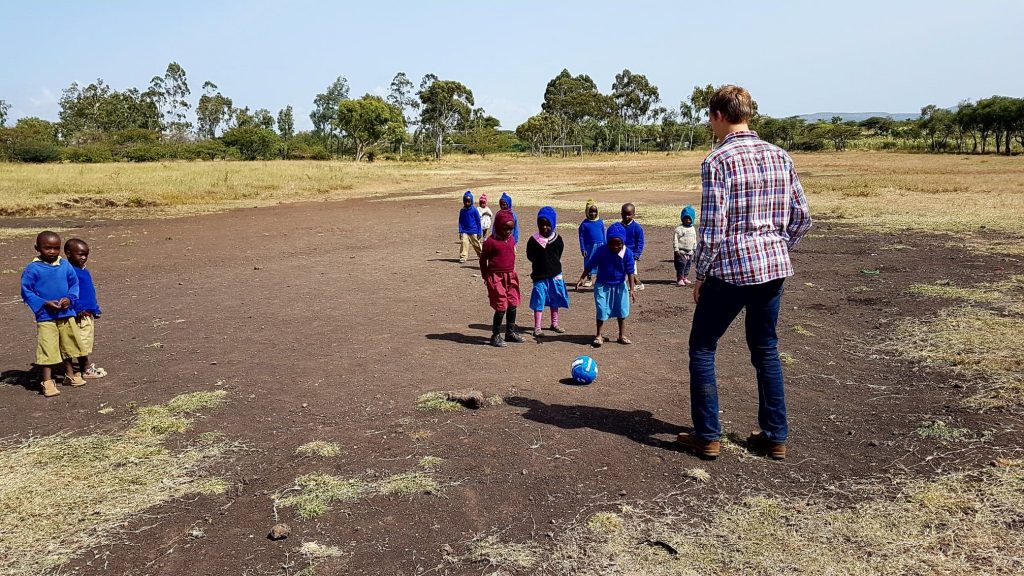
Photo2: (Lee playing soccer with some kids)
On the vet side of things, we have been visiting lots and farms still. We had one case that stood out however. We were visiting a farm that had a cow that wasn’t coming into heat but was being fed well. Upon a rectal exam, we noticed the cow had a softball-sized cystic ovary. This was way bigger than normal as a normal ovary is closer to a grape in size. In order to solve this problem, we administered a GnRH hormone to induce ovulation and recommended some follow up injections.

Photo 3: (Dr. Remmy Mugambi explaining deworming dosages to some farmers)
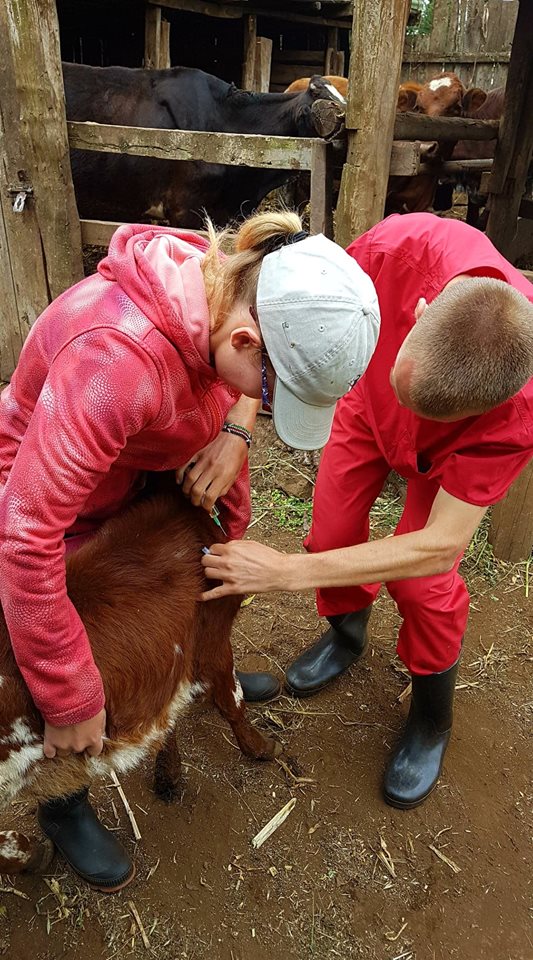
Photo 4: (Ashley and Lee giving an injection)
To celebrate Canada day here in Kenya, we decided to go hiking up one of the monster-sized hills in the area. Once at the top of the hill, we took a few shots with the Canada flag and enjoyed the view before heading home. This hill is unique in that we saw a few other people at the top of the hill since it is a common place for people to go to and pray. In addition, we also saw a few cows that people will walk up the hill to graze.
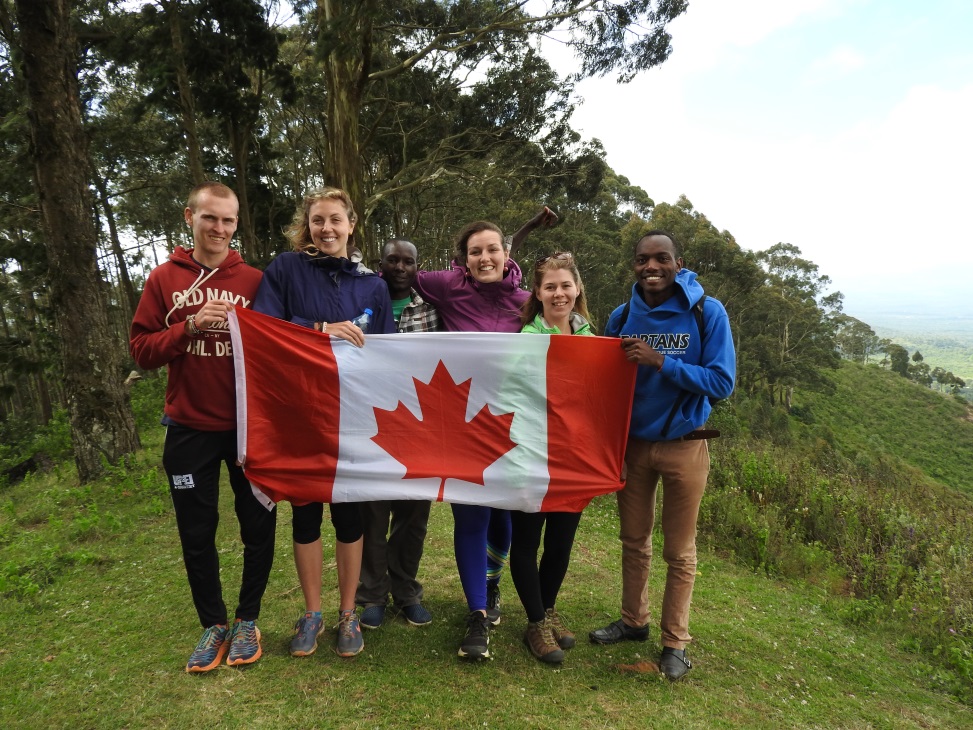
Photo 5: (Lee, Madi, Boniface (a house helper), Hannah, Ashley and Remmy celebrating Canada day)
I hope you all had a great Canada day. After working hard for the first month and half, we were in Mombasa in Eastern Kenya for a few days to have a little relaxing break.
By Lee Wesselius
It took 8 weeks but I finally have a Kimeru name.
By Ashley Kroyer (veterinary student intern)
On Friday, Lee and I learned from our “Kenyan mom” Beatrice (how many mothers is that now?) that babies are given names according to the characteristics of their grandparent. Remmy, for example, has the name Mugambi, “someone who makes good judgements”, after his grandfather. After some discussion on our characters, Remmy and our other friend, Mwenda, christened each of us with Kenyan names on Saturday.
So what have they named me? Well, Remmy explained that he notices on farms that farmers smile with me and “become so very jovial”. My Kimeru name is Kendi, “someone who makes people happy” or “is loved by many”. Boni came home Sunday night and played at guessing our names, and he gave me “Kendi” as well. I feel honored, happy, and blessed. Once again, we are being wholly embraced into Meru and its culture – including a visit to Remmy’s parents’ farm.
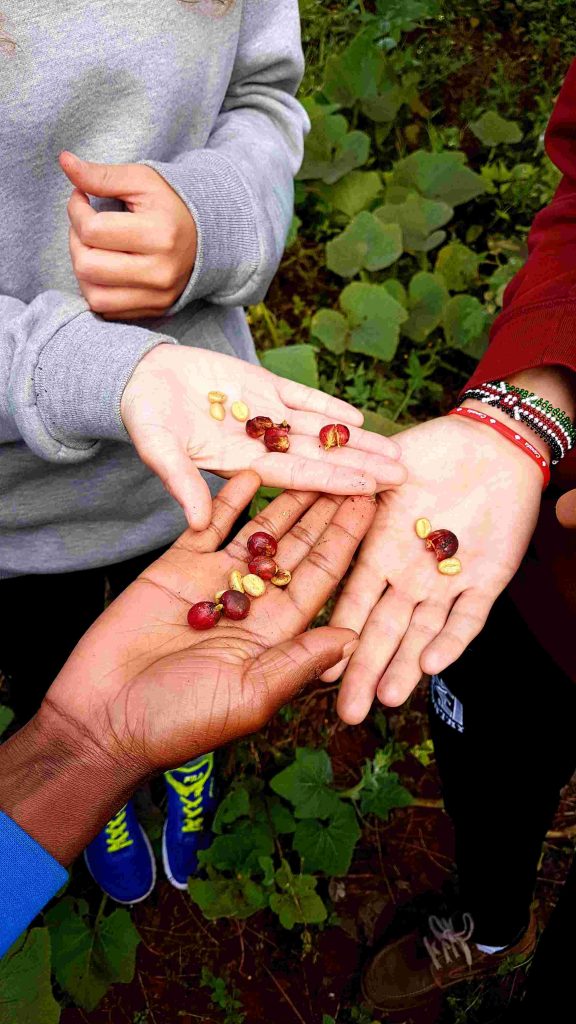
Caption: I have a very real coffee addiction. Imagine my glee to visit a coffee plantation at Remmy’s family home!
Another Kenyan culture pleasure is being treated with yogurt and ugali (or chapati, for me). This time it is by our friend, Julius (Jennifer Murogocho’s brother), at his dairy bar! He tells me, “I love two things very much: cows and dogs”. The milk for our yogurt came from his own cows on Tosha (“enough”) Farm.
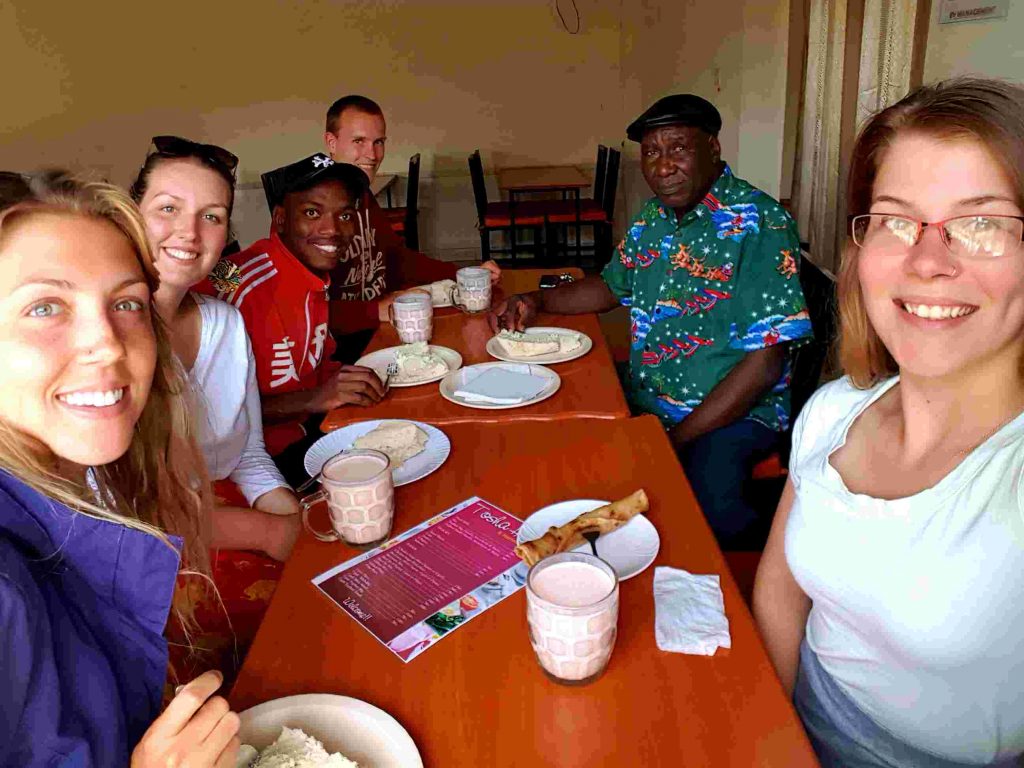
Caption: Julius’ dairy bar (left to right: Madi, Hannah, Remmy, Lee, Julius, Ashley)
Our week in Mombasa went well, despite the weather being less than vacation-y for much of the time. Our first day, we were caught in a downpour on the beach. Our third day, we waited out another downpour in a sandal shop during our walking tour of Old Mombasa. Our last night, I video-chatted with mom from the hostel during more rain and two brief power outages.
But, such is life. The mini-break from internship duties was still very worthwhile, and I did manage to sunburn (not that it takes much…). And feed a tortoise – a real highlight.
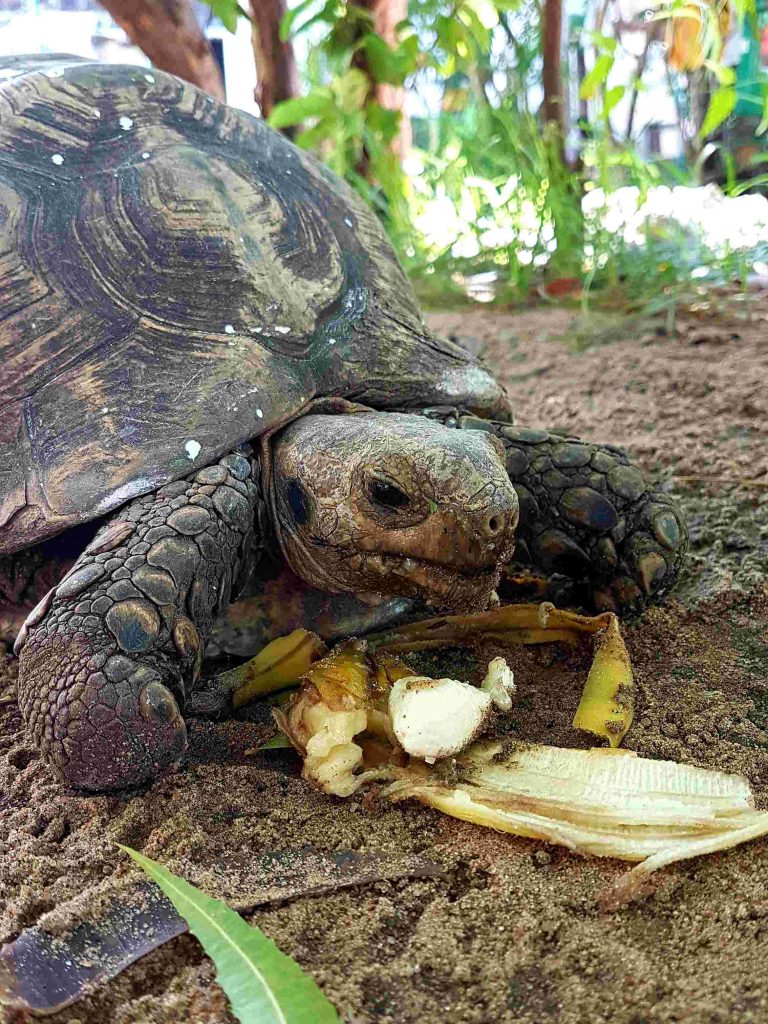
Caption: I suffer an overwhelming need to feed everything. Think a tortoise can’t run? Trust me, just tempt ’em with some banana and mango.
We returned “home” on a Sunday, and back to our work with Naari dairy farmers. Part of me was very reluctant leaving the sunshine on the coast, and for good reason. If anyone is able to follow my Facebook posts, you’ll see the kind of July weather we have back here on Mount Kenya in Naari – St. John’s (NL) has a run for it’s money as “fog city”, lemme tell ya. And I know, I know… I am on an adventure in Kenya and shouldn’t complain about the weather (although isn’t that Canadian to complain about weather?), but it’s a bit of a bummer hearing that at home there’s sun and 25+ temperatures – weather that I live for. It’s a bit of a challenge for the morale some days.
But, with that said, we’re able to laugh about it sometimes, too! On Tuesday, we treated ourselves to the closest version of traditional s’mores that we could manage with marshmallows from Mombasa, chocolate, and – our obsession – Ginger Nut cookies (like ginger snaps, but sooo much better). Remmy tried his first s’more and we had a few moments of rioting laughter when melted marshmallow was almost dropped on top of Lee’s head as he was kneeling below Remmy to tend the fire. The next funny weather-related story comes from our clothes – which came off the clothesline on Friday after 2 days on the line… everything still too damp to fold. We sometimes have to hang it up inside the house to finish drying. Figuring I’d distract my mind for a while, I knelt on the floor and ironed all of my shirts, pants, even my pajamas (can you imagine!) to help make them dry! I felt a little ridiculous and had a good solid chuckle at myself.
Keeping the mood light and learning to not let ourselves grumble over things beyond our control is helping to power us through these next couple weeks until the sun (fingers crossed) finds us again in August.
Okay, end rant #623 about the weather.
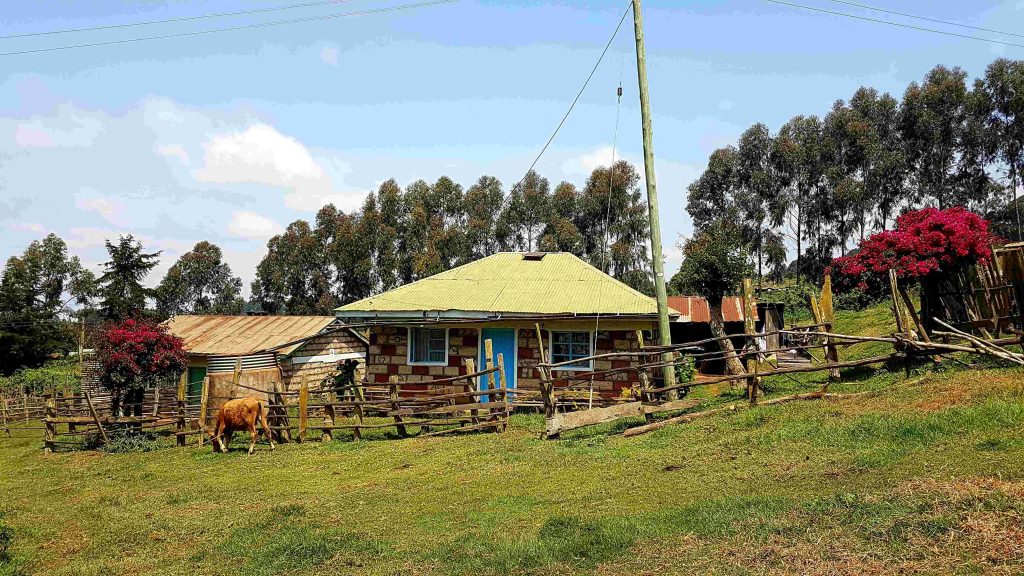
Caption: A farmer’s homestead in Naari, Meru County, Kenya. When the sun does shine, this whole place bursts with color.
In other news, there are two new lambs born to the flock here at the house! I am way excited to see them. We’re keeping a close eye on these ones, and the girls have named the first “Marshmallow”. (What’s with these nutritionists naming the lambs after food!?? Haha! Kidding, kidding! I approve.) The second is a cute ashy brown, and we’ve settled on “Mudpie” to stick with the “M-foods” theme.
Ruth and Lillian at the dairy and Remmy, George, and Boni at home continue to help me with learning Kimeru (the local “mother tongue” spoken in Meru County) and Swahili. Recently, I graduated from simple vocab to some phrases, with my new favorites being:
“Bwite bwega” (Kimeru) – “go well”, said to us by the ladies when we leave Naari Dairy to begin work for the day;
“Tuonane baadaye” and “tuonane kesho” (Swahili) – “see you later” and “see you tomorrow“.
Back on farms, the internship is paying off as I hoped it would – my palpation skills are indeed improving! I’d guess I have a chance to do maybe 5 or so a week. Six weeks ago, when Dr Vanleeuwen was with us and I was doing my very first palpations, the best my hands could do was to identify the cervix – the rest I could only describe as “soft and squishy”. Six weeks ago, I wasn’t entirely convinced I’d ever be able to distinguish “uterus-squish” from “bladder-squish” from “rectal wall-squish”. In the back of my mind I’d be thinking that large animal vets just had some inherent, magical ability to “know” what was what, and that I did not have that ability… Listening to instructions of “follow up the cervix and find the bifurcation (split) of the uterine horns” led to the most disappointing feeling while I blindly grabbed around inside for nothing.
But with time, I found ovaries and celebrated. Before Mombasa, I made another breakthrough, and celebrated some more: identifying the bifurcation of the uterine horns! I reached in, feeling very opposite to Remmy’s optimistic “yes, you can find it!”, and there it was… it felt so obvious it was as if flipping a light switch, and to be entirely honest, I had to make some effort to hold back hysterical relief and some watery eyes. The heavy disappointment I had been feeling (unjustly, I know…) evaporated. And this past week, I did it again! I followed the entire tract along both uterine horns, found both ovaries, then let them go and even did it a second, third, and fourth time! It’s hard to express just how thankful I am to be heading to third year with these skills!
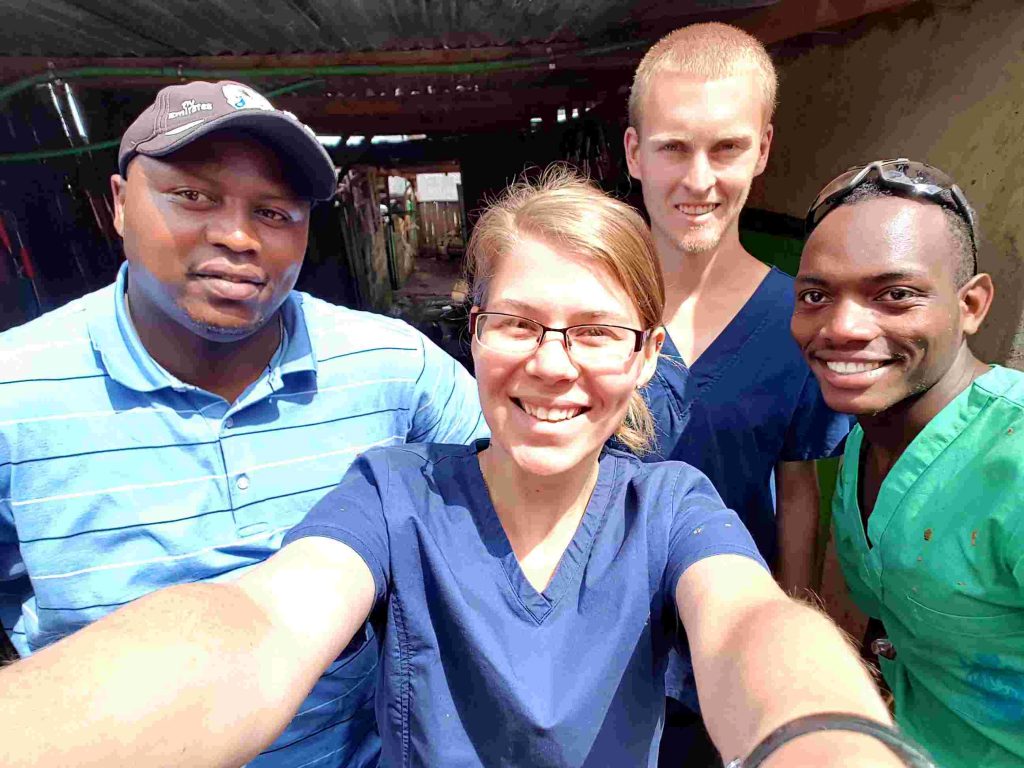
Caption: “THE TEAM!” Attending some cases with Benard on a sunny day (we do see it sometimes), learning about common ailments of cows in Naari and how to treat them.
(Pictured left to right: Ben, Ashley, Lee, Remmy)
Finally, when our days were beginning to feel somewhat repetitive again, life spiced things up a bit. On Beatrice (our mother)’s farm, we began by literally wrestling half a dozen pigs to the ground to give some injections to treat mites. I’m not exaggerating, we wrestled them! I imagine it was quite an entertaining sight! In school, they taught us to use a board or a snare to restrain pigs… having neither of these handy to us on the farm, I tried to use my legs in place of the board. No luck. We tried make-shifting a snare from rope. Failed again. Finally, we reverted to desperately grabbing limbs and tripping the pigs to pin them down on their sides. It wasn’t done with much finesse, but pinning them down on their sides helped them to calm down once they felt more secure, and made it possible to give the medicine The worst part was the noise – it seems pigs will scream bloody murder if you so much as back them into a corner. It was deafening!
What did it all teach me? I will not, no way and no how, be practicing swine medicine. Ever.

Caption: The generosity of the people is heartwarming! Leaving this farm, I spotted an orange tree and mentioned I love oranges. Samuel and his son, Kimathi, sent us home with a bag full!
(Pictured left to right: Lee, Kimathi, Ashley, Remmy, Samuel)
And I suppose that’s all part of the experience. Most days, going to new farms every day, we really don’t know what we could be walking into! With only one more month in Kenya, there’s still plenty of time for more adventure (and perhaps another bruise or three…).
Sending lots of love to Canada
Ashley
Sun, cool cases, and home stretch
By Lee Wesselius (vet student and QES Scholar)
Hello everyone, the sun has finally come out for the last few days after several weeks of mostly cloudy weather. The area is still very dry however as we haven’t had considerable rain in around 2 months. I’m sure the locals wouldn’t mind one day of rain anytime soon.

Photo1: The vet team enjoying a cup of tea: Ashley, me, and Remmy
As Ashley mentioned in her last blog, we have all been given Kimeru names based on our personalities. The name given to me is Murithi which means someone who enjoys dealing with livestock. Given my farming background and my current pursuit of a veterinary degree, it was a good fit.
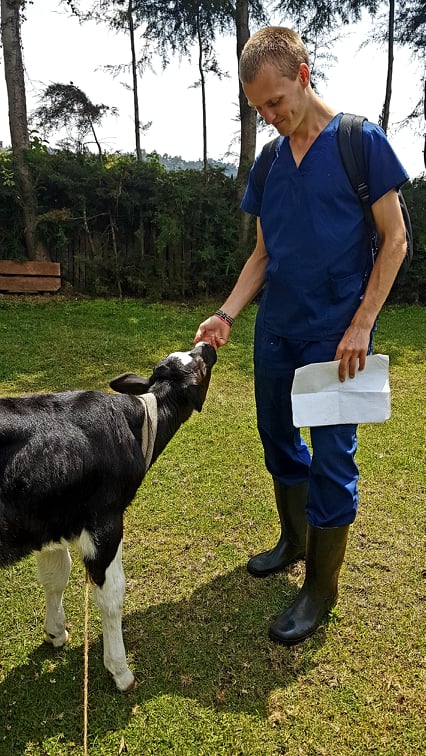
Photo2: Making a new friend
Over the past couple weeks, we’ve managed to stumble onto a few interesting cases. The first one was a case of a prolapsed vagina in a dairy cow at the biggest farm in the area. In order to resolve this case, we cleaned it up, pushed it back into the cow and sutured the cow to hopefully prevent it from reoccurring. We also performed a castration at another farm on a big bull. Having only experienced castrations using a surgical approach, we decided on a bloodless approach this time. Finally, we saw a suspected case of actinobacillosis which resulted in a large swollen face. On the first day, we administered a diuretic and anti-inflammatory and came back the next day with sodium iodide to finish the treatment. The swelling had already significantly reduced by the next day and hopefully the sodium iodide will take care of the infection. The administration of the sodium iodide is done intravascularly and presented a bit of a struggle for us as we had to restrain the cow and deal with the cow trying to move around a lot.
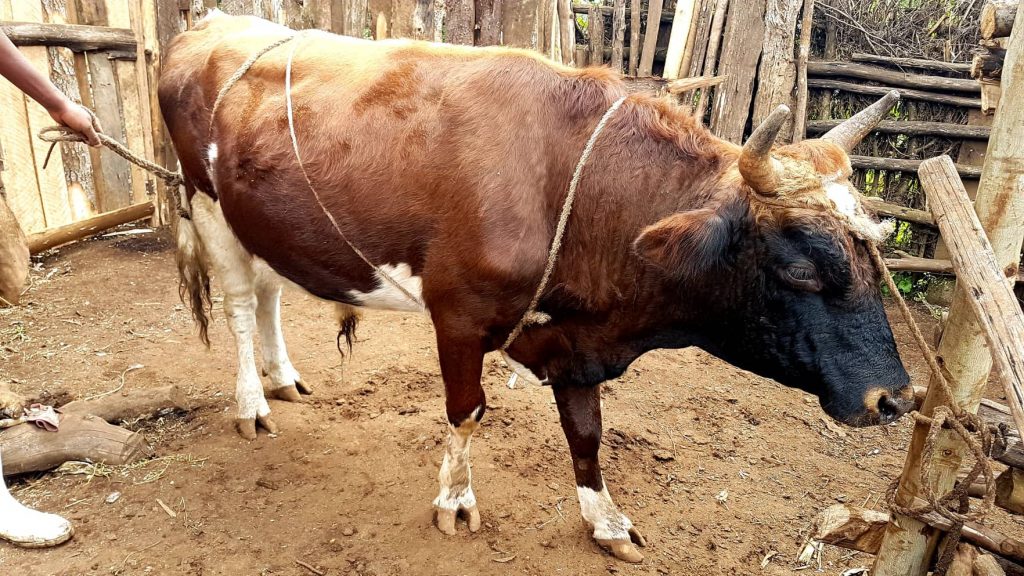
Photo3: The bull that lost some of his masculinity
Being able to do veterinary work with cows every day all day has allowed me to gain some valuable experience that should help me out immensely next year in vet school. I’m starting to gain some confidence diagnosing pregnancies over 2 months old through palpation.
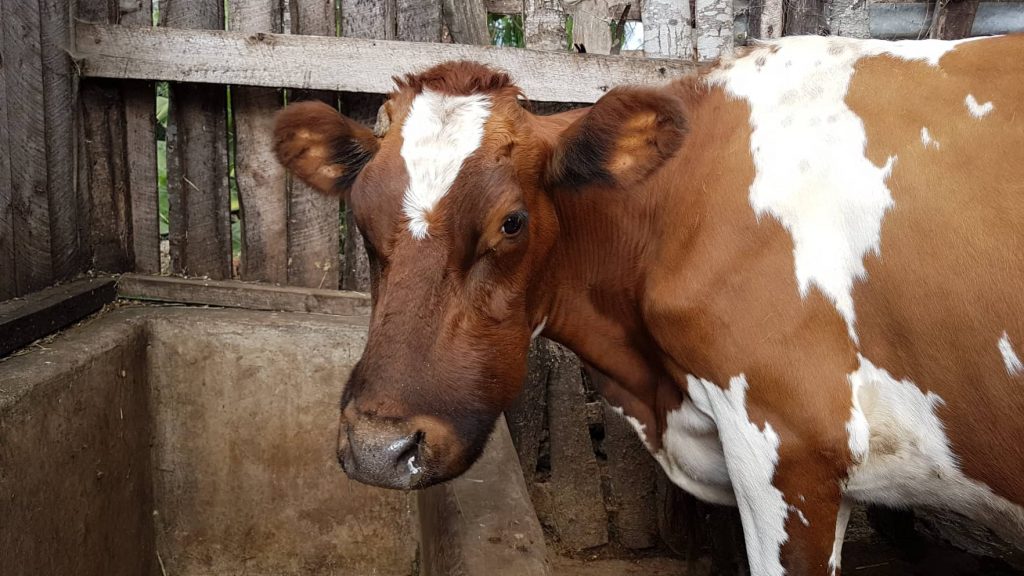
Photo4: The cow with suspected actinobacillosis
We are now in the homestretch of the Kenya trip with less than three weeks remaining. We are all enjoying our time here but also looking forward to being home in Canada.
Until next time,
Lee “Murithi” Wesselius
15 August 2018
Jambo! Muuga! Hello from Ashley!
It’s been some time since my last post, but not for lack of experiences to share! In fact, August seems to have brought us an entire summer’s worth of Kenyan culture in just a couple of weeks, and time truly has flown by. Keeping the stories brief will be a challenge (or else I may have you reading for hours), but I’ll do my best without having to sacrifice any awesome-ness.
First things first: THE SUN HAS RETURNED! Can you tell I’m in my glee? Applying sunscreen twice a day is a welcome change from zipping up my sweater and hiding under the hood. Of course, with this sun comes dry, dry, DRY dirt, leading to dusty scrubs, dusty hair, dusty hands, and undoubtedly, some fairly dusty lungs after travelling all day over the roads of Naari from farm to farm. We’ve learned that the rains won’t come again until October, so we’ve been happy to visit farmers who are preparing silage to feed their cows as less forage becomes able to be harvested in this dry season.
Next, on to the real excitement. If you were to ask me at the end of July how things were going, I would have had to admit my days were feeling slightly monotonous and I had begun to feel worn-out. I partially blame the poor weather, together with some happenings in Canada that left me wishing to be in Newfoundland. Thankfully, the universe pulled through with a pick-me-up the evening Boni called me to the kitchen and said, “Kendi, would you all like to attend a wedding?” Oh, would we ever! Who could pass that up!?
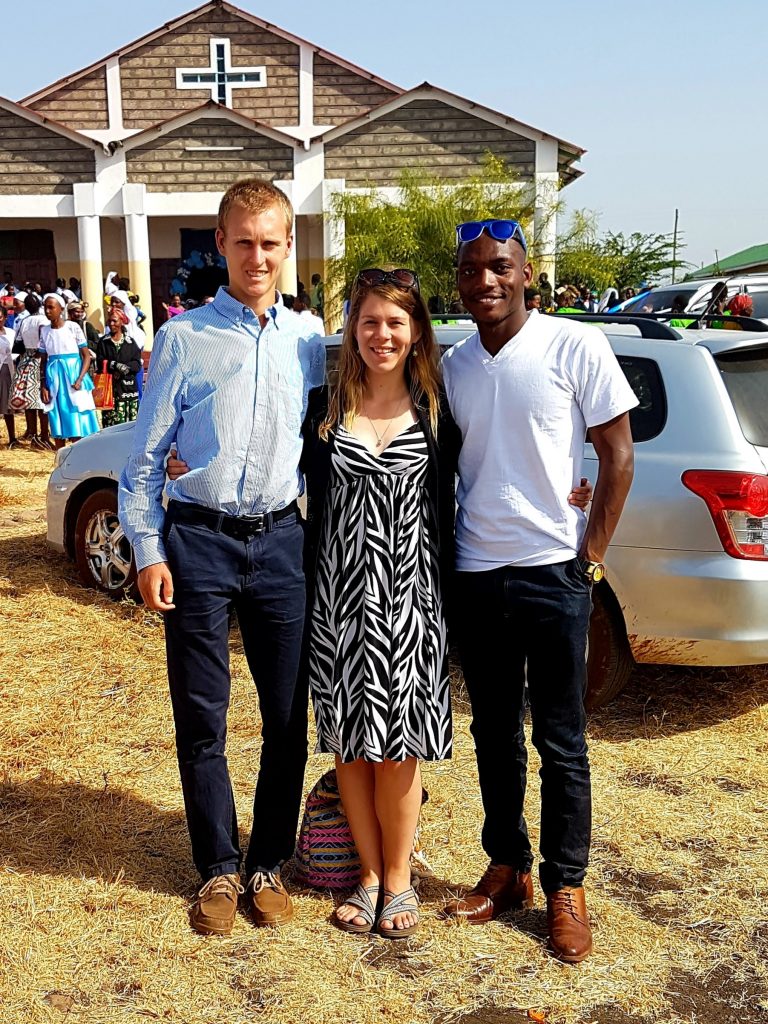
Picture 1: Where are the gumboots!? (left to right: Lee, Ashley, Remmy)
On August 5th, we all fancied up – our team almost unrecognizable without our scrubs and boots! – and visited nearby Isiolo, where Boni’s high school friend, Andrew, was marrying his lovely bride, Lydiah. We attended the ceremony in a Catholic church and while the service was primarily in Kiswahili, much of it was familiar to weddings at home – you know, reading Bible verses, speaking vows, singing hymns, taking Communion. The differences, however, were why we were there: The bridal party and groomsmen danced up the aisle! Children from the church congregation danced up the aisle! After the vows and the kiss, the bride and groom danced down the aisle! Everyone sang and shuffled in the congregation, while we four wazungu (“white people”) tried to keep the beat and absorb all that was happening. We completed the afternoon with a meal of nyama choma (“roasted meat”, Kenyan barbequed mbuzi, “goat”) and then pieces of wedding cake.
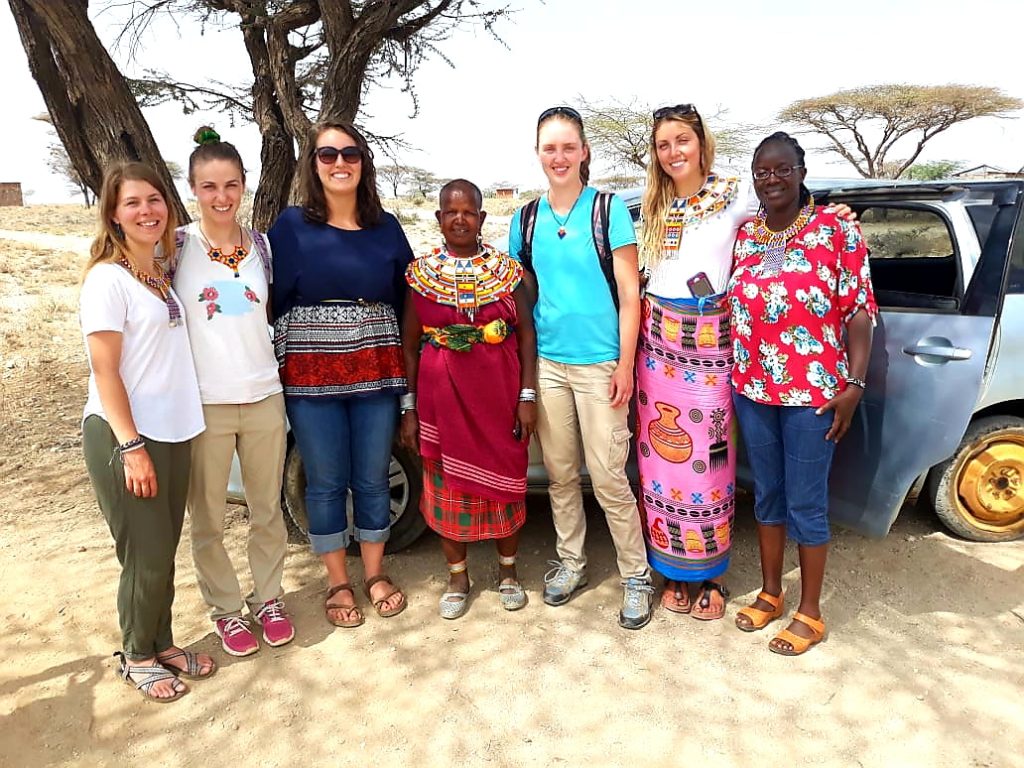
Picture 2: Visiting with Mama Josephat at Unity, a women’s village in Samburu (left to right: Ashley, Alexandra (VWB), Hannah, Mama Josephat, Aiyanna (VWB), Madi, Salome).
The next morning, joined by our friend Salome and two girls interning with Veterinarians Without Borders (VWB), we all piled back into a car to drive a bit farther north to Archer’s Post in Samburu County. Our mission for the day: visiting a women’s village called “Unity”. I was very fortunate to have been told about this village by a classmate, Rachael (doing equally awesome vet work this summer in Vietnam!), and was incredibly excited for an opportunity to learn about women-governing-women in the middle of such a patriarchal society. At the gate, we were delighted to be welcomed by song, dance, and giant, beautiful, beaded necklaces! I was in my glee! (The theme of today’s blog, apparently!) Following some group dancing and photos, we were welcomed by Mama Josephat* and given a history of Unity village – established in 2011 by half a dozen women, the village was built for those wishing to escape such challenges as oppression and domestic violence at home. Today, twenty-five women inhabit Unity, each with shared duties and responsibilities, all taking part in meetings several times a month, all with opinions and voices that can be expressed and heard.
In addition to learning about Unity, I took a moment to speak with a member of the village, Patricia, about the anti-FGM (female genital mutilation) movement. I was intrigued to learn about such a powerful push against such a deep-set and long-practiced tradition remaining in some parts of Kenya. Patricia explained to me that women in Unity do not practice FGM, and their daughters (like all girls in Kenya that are attending school) are taught that no one can force the practice upon them. I asked what has encouraged modern Kenyan women to move away from the practice, and was told that aside from health and well-being, women are becoming aware of the unfair standard set against them – in a culture where men can take multiple wives, women were traditionally “circumcised” as girls in order to be fit for marriage and as a means of preventing infidelity. Patricia explained that the practice “takes a woman’s feelings”, and that women are becoming more aware of the injustice being done to them. In Kenya, female genital mutilation has been outlawed, but as with any major paradigm shift, the change and acceptance of something “new” takes both time and an increase in education. I left the village happy to have had the opportunity to learn about these forms of women empowerment in Kenya, and all of the change, potential, and growth that is coming in this beautiful country.
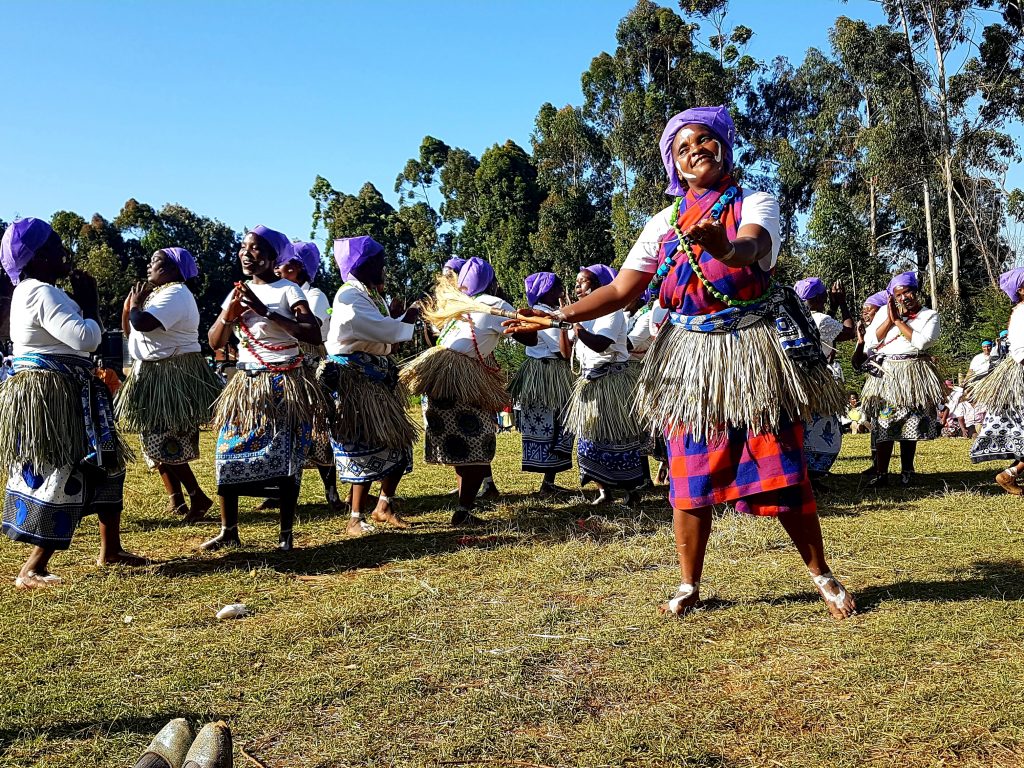
Picture 3: Women in costume performing a traditional cultural “folkdance” at a Methodist Church women’s rally.
Only days after a fantastic weekend, we chanced upon learning of a Methodist Church women’s rally happening at a nearby school. In our scrubs and boots, we visited in the morning to catch some of the singing, and to happily be greeted by Beatrice (mom) and Jane (Gatwiri). More glee! The ladies invited us back for the afternoon so that we could take in the real fun – traditional dance! We squeezed in one more farm for the day then returned to costumes, color, song, and the most vibrant energy ever! And while I sat on the grass with Beatrice by my side, I had another feeling of “wow, I am actually in Africa”. Honestly, how I’ve gotten through this entire summer with only tearing-up once from the emotion of it all is truly a miracle.
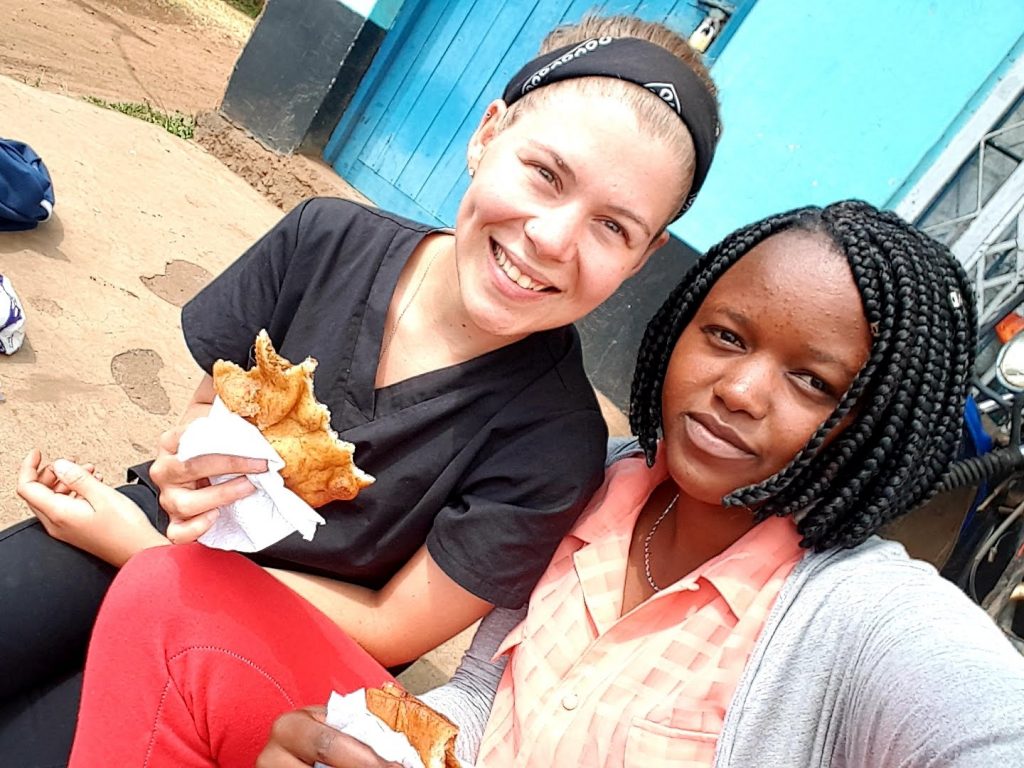
Picture 4: Making fond memories with Magda and mandazi – two of my favorites from Kenya!
The cultural immersion continued even at our Kenyan home, when George taught me the recipe for mandazi, yummy thin pieces of bread fried in oil (that to my delight are very similar to fry-jacks, my favorite breakfast treat from last summer in Belize!), as well as how to make masala tea (“spiced tea”, what we are more familiar with as chai) – tastes of Kenya to compliment the music, the dancing, and the colors.
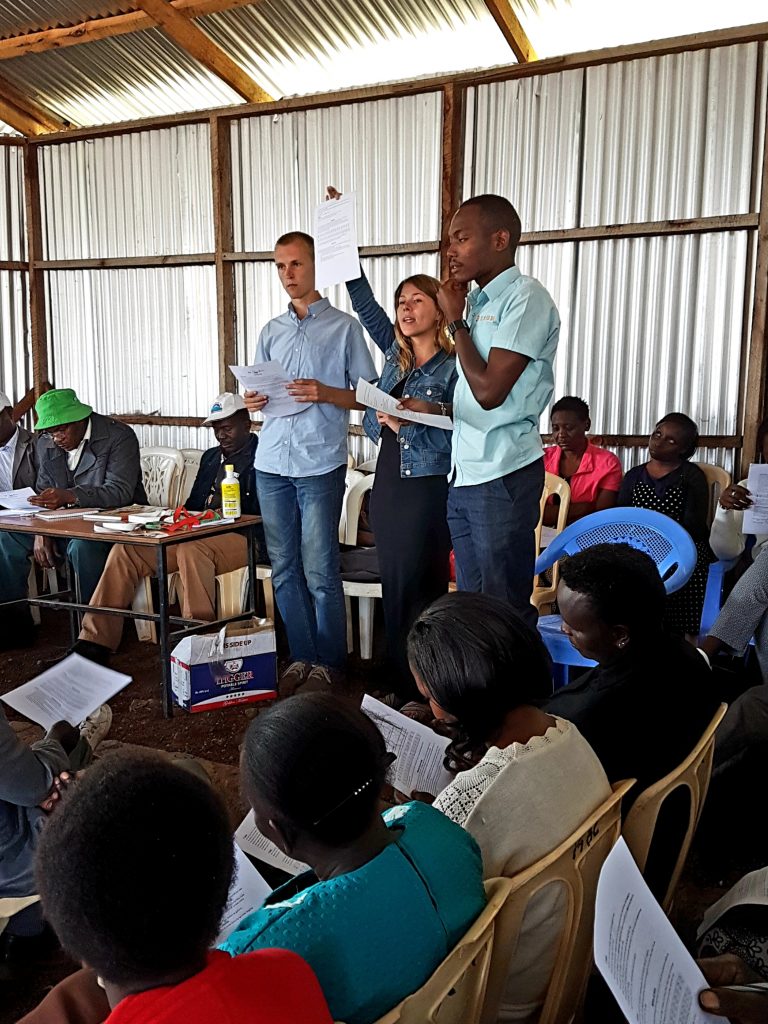
Picture 5. Delivering a seminar to all members of Naari Dairy, and to reach out especially to members who, due to time constraints, did not receive a visit from our team this summer.
And with that, we’ve reached our final day in Naari. Lee, Remmy, and I delivered a brief presentation to farmers of Naari Dairy to highlight the most common challenges and issues we encountered with them over the course of our internship – primarily issues of underfeeding dairy meal and minerals and how to accurately measure the weight of cattle to determine appropriate doses of deworming medicine. Inspired by calendars printed with nutritional messages (in Kimeru) that were distributed by the nutrition team and recognizing the limitations of our English handbooks, Lee drafted up a brief handout summarizing all of our advice that was then translated and given to attendees of the seminar. It was our wish that having the written information will help with their memory as well as the implementation of new practices, and will encourage farmers to share the knowledge with their neighbours.
The seminar ended with a grand surprise when members of the Dairy presented us with thank-you gifts: “Naari Dairy” shirts, plus lesos (colorful fabric worn tied around the waist, often printed with a border and a proverb) for the girls! IN MY GLEE. Later that evening, many of our new friends joined us for one last dinner and bittersweet “goodbyes”. The surprises continued as Mama Melissa* walked in carrying a black forest cake (my absolute fave! IN MY… well, I don’t really need to say it again, do I?), the decoration of “Farewell Friends” reminding us of how blessed and honored we’ve been to have found ourselves a family from across the globe.
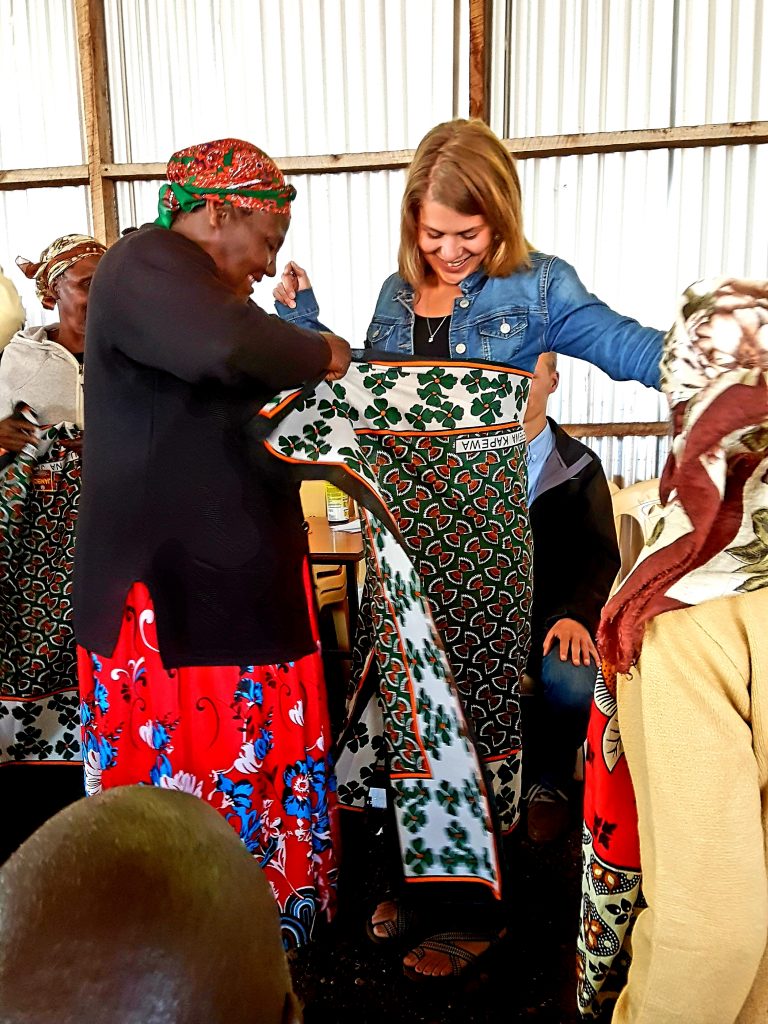
Picture 6. Being wrapped in a leso – what a beautiful farewell present!
For the last time from Kenya, I send my love and hugs.
Ashley Kendi
